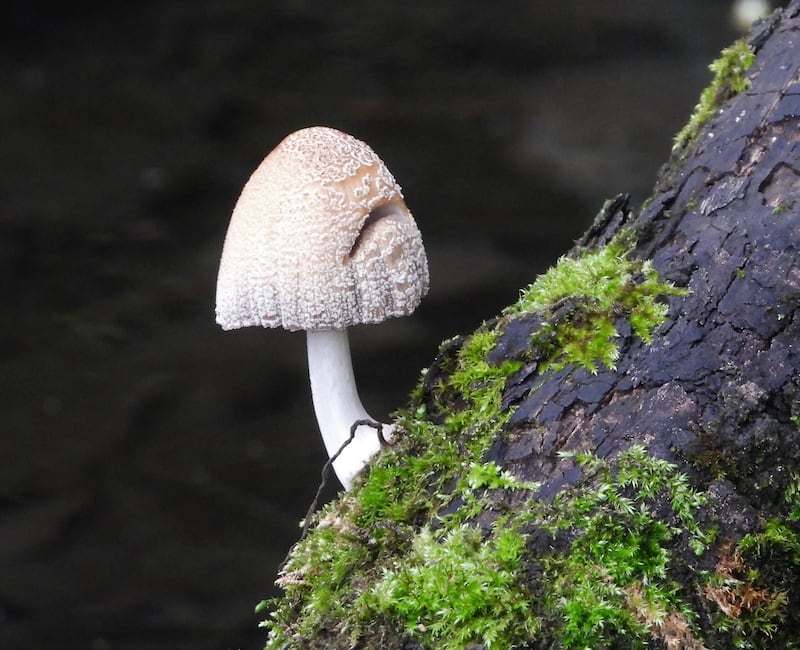Some of the extraordinary dynamics of the natural world happen out of human view. One example is the mycorrhizal networks between fungi and plants under the soil. This vast underground lattice of fungal strands known as mycelium connect up to 90 per cent of trees on the planet in an almost inconceivable two-way communication system which has been dubbed the “wood wide web”.
Fungi were among the first forms of life on the planet. With their long sinuous threads of cells (hyphae) – some 50 times finer than the finest roots – these fungi consumed minerals locked into rocks, thus helping create soil.
But, it’s the symbiotic relationship between fungi and plants that is extraordinary. Fungi give trees and plants much-needed nutrients (nitrogen and phosphorous) that they have extracted from the soil and, in exchange, trees and plants supply them with the carbon they have pulled from the air via photosynthesis. With the increased attention placed on the need to draw down carbon from the atmosphere, these mycorrhizal networks are a global carbon sink.
These fungal connections are so valuable for the growth of trees that the semi-state forestry company Coillte brought over UK expert Toby Parkes to collect mycorrhizal fungi in native woodlands close to new planting sites so that he could inoculate the roots of new trees to promote the development of mycorrhizal networks in the new forests.
‘She wasn’t cared for. Who didn’t care for her? And why?’ Grace case report leaves questions unanswered
Alarm bells are sounding over falling visitor numbers. But is tourism really in crisis?
Ardal O’Hanlon on Father Ted at 30: ‘I thought it was a sh*t idea. Who was going to want to watch a sitcom about priests?’
‘My son was killed in front of my eyes. Three bullets in his chest’: Patrick Freyne in Chad’s desert camps
Parkes is the founder and CEO of the Scottish biotechnology company Rhizocore Technologies which produces locally adapted mycorrhizal fungi to enhance tree planting and woodland regeneration. These fungi (planted in pellet form) improve the growth of trees by giving more access to nutrients, minerals and water. They are also expected to give the trees better resilience to droughts and root-borne diseases.
In 2022, Roisín Moore from Rhizocore Technologies joined members of the Coillte Nature team to collect samples of fungi close to the hazel, oak and birch trees in a native woodland near Westport, Co Mayo. She took them away to create a culture for pellets which would be added to the ground with each new sapling, giving it a better chance of connecting to its local ‘wood wide web’.
Clear felling of forests destroys the mycorrhizal networks making it harder for new trees to establish in these areas. This might partly explain why the continuous cover forestry could produce better timber as well as more biodiverse woodlands. Gardeners can also use natural fertilisers containing mycorrhizal fungi to improve the growth of their plants.

Scientists across the world are also collecting specimens of various fungi tounderstand how exactly the symbiotic relationship between fungi and plants work. Luke Quill, a PhD student at Trinity College Dublin (TCD) is studying the biodiversity of mycorrhizal fungi in Ireland to see how they could be used in sustainable agriculture.
In an Irish Times piece, Beware our mushroom overlords, they are smarter than they look, Yvonne Buckley, Professor of Zoology at TCD explained how the relationships between fungi and plants aren’t always equal: some parasitic plants – particularly those that no longer have any green parts to photosynthesise with – can “hack” the network, taking nutrients but giving nothing in return. Some fungi can also hijack both the plant and the pollinating insect by making fungal reproductive spores for the insect to transport from flower to flower instead of pollen.
[ Decline in awareness of plants comes at a time when plants need most attentionOpens in new window ]
[ 'Devestating loss' of Irish plant life revealed in 20 year studyOpens in new window ]
[ 'There are two main reasons for burning land. Both involve cold, hard cash.'Opens in new window ]
The commercial world has also discovered a use for this natural, threadlike mycelium. A cultivated form of fungal mycelium is now produced for use as a viable replacement for packaging such as styrofoam. As well as being lightweight, strong and cheap to make, it can be molded into different shapes, growing to form a lattice around other materials such as woodchip or straw. This new material is then heat treated to dry out, kill spores and stop the growth process. And when manufactured with other biodegradable materials such as woodchip, it naturally disintegrates outdoors without causing any environmental harm.
IKEA has committed to using so-called mushroom packaging for some of its products. Some companies even infuse wildflower and grass seeds into their mycelium packaging to contribute to biodiversity.
The New York-based mycelium pack-tech company Ecovative is one of the current market leaders in this green packaging evolution. It produces MycoComposite, a rigid composite material made with agricultural byproducts to replace styrofoam for large household electrical goods such as fridges and cookers. MycoFlex, another of their products is a 100 per cent flexible foam used to package cosmetics, luggage and footwear as a replacement for polystyrene.
Animal-free leather, insulation panels and skin care sponges are other potential future uses of cultivated mycelium.













